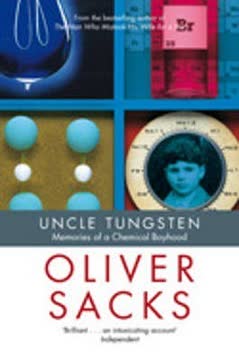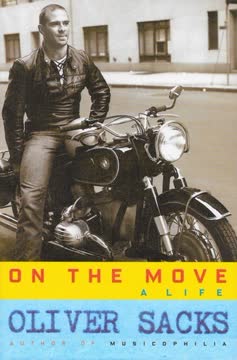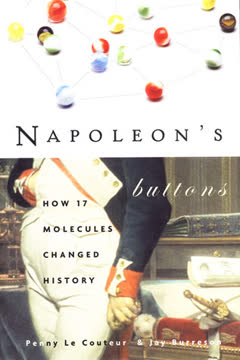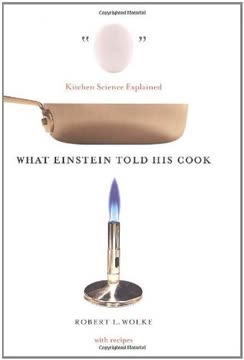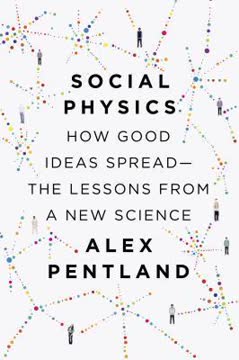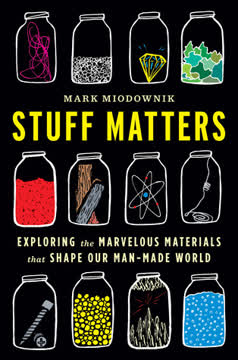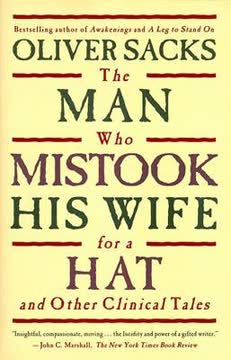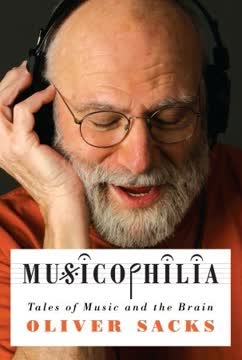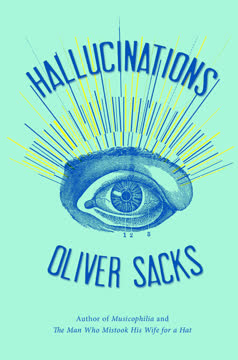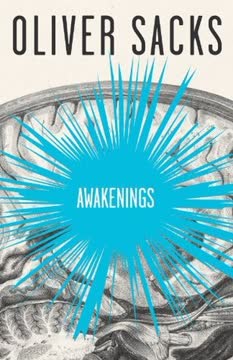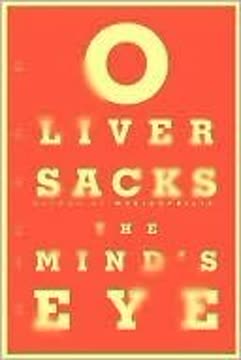Key Takeaways
1. Metals as Childhood Touchstones Spark Scientific Curiosity
Many of my childhood memories are of metals: these seemed to exert a power on me from the start.
Early fascination. Oliver Sacks's memoir, Uncle Tungsten, begins with an intense childhood attraction to metals, which served as tangible, intriguing objects that sparked his early scientific curiosity. The allure of metals stemmed from their unique physical properties: their shine, weight, coolness, and the sounds they made when struck. These sensory experiences formed the foundation of his lifelong passion for chemistry.
Sensory exploration. Sacks's early interactions with metals were deeply sensory. He recalls handling his mother's gold wedding ring, feeling its weight, and learning about its resistance to tarnish. He explored copper, zinc, and tin, noting their colors and textures. These hands-on experiences transformed abstract concepts into concrete realities, fueling his desire to understand the underlying science.
Questions and explanations. Sacks's curiosity led him to bombard his parents with questions about the nature of metals, light, and other phenomena. His mother, though sometimes perplexed, patiently provided explanations, often introducing scientific concepts beyond his immediate comprehension. These early conversations, filled with terms like "crystal structure" and "alloys," ignited his imagination and set him on a path of scientific inquiry.
2. The Sacred Spaces of Home Fuel a Young Mind
Certain rooms in the house had a magical or sacred quality, perhaps my parents’ surgery (both of them were physicians) above all, with its bottles of medicine, its balance for weighing out powders, the racks of test tubes and beakers, the spirit lamp, and the examining table.
Rooms of wonder. Sacks's childhood home was filled with spaces that held a special significance, nurturing his intellectual and imaginative development. His parents' surgery, with its array of medical instruments and chemicals, was a source of both fascination and apprehension. The library, filled with books on diverse subjects, provided a sanctuary for reading and intellectual exploration.
Stimulating imagination. The house itself, with its stained glass windows, hidden cupboards, and forbidden attic, sparked his imagination and sense of mystery. These physical spaces became the backdrop for his early intellectual adventures, fostering a sense of wonder and curiosity about the world.
Family influence. The presence of numerous aunts and uncles, many of whom were scientists or mathematicians, further enriched his intellectual environment. Family gatherings were filled with discussions about science and mathematics, creating a culture of inquiry and intellectual stimulation that shaped his early development.
3. Exile and Abandonment Ignite a Scientific Refuge
For me, the refuge at first was in numbers.
Traumatic experience. Sacks's experience at a boarding school during World War II was deeply traumatic, marked by cruelty, neglect, and a sense of abandonment. This period of exile from his family and familiar surroundings had a profound impact on his emotional and intellectual development.
Seeking solace. In the face of this adversity, Sacks sought refuge in numbers, finding solace in their order, invariance, and certainty. He immersed himself in prime numbers, factorization, and mathematical patterns, creating a private world where he could escape the harsh realities of his surroundings.
Nature and numbers. His aunt's visits to Cheshire provided a connection to nature and further mathematical inspiration. She introduced him to the Fibonacci sequence, the golden section, and the mathematical patterns found in plants and pinecones. This connection between nature and numbers solidified his belief that mathematics was the language of the universe, a refuge from the chaos and cruelty of his daily life.
4. Uncle Tungsten's World: A Crucible of Chemical Wonder
“Feel it, Oliver,” he would say, thrusting a bar at me. “Nothing in the world feels like sintered tungsten.”
A mentor's influence. Uncle Dave, known as Uncle Tungsten, played a pivotal role in shaping Sacks's passion for chemistry. As a manufacturer of lightbulbs, Uncle Dave provided Sacks with access to a world of metals, machinery, and chemical processes.
Hands-on learning. Uncle Dave's factory became a laboratory for Sacks, where he could explore the properties of different metals, conduct experiments, and ask endless questions. Uncle Dave's enthusiasm for tungsten, its density, refractoriness, and chemical stability, instilled in Sacks a deep appreciation for the beauty and power of the elements.
Beyond the textbook. Uncle Dave's lessons extended beyond the textbook, encompassing the history of incandescent lamps, the chemistry of light, and the stories of the pioneering scientists who had shaped the field. This blend of practical knowledge, historical context, and personal anecdotes brought chemistry to life for Sacks, solidifying his desire to become a chemist himself.
5. Illuminating Minds: The Quest for Light and Knowledge
Edison’s vision, Uncle liked to say, of light for the masses, had finally come true in the incandescent bulb.
The pursuit of light. Sacks's fascination with metals was intertwined with a broader interest in light, its sources, and its properties. Uncle Dave's expertise in lightbulbs provided a unique perspective on the history of chemical discovery, revealing how the quest for better illumination had driven scientific innovation.
From gas to electricity. The transition from candles and oil lamps to gas lighting and, ultimately, electric light was a story of ingenuity, competition, and technological advancement. The development of gas mantles, carbon filaments, and tungsten filaments showcased the interplay of chemistry, physics, and engineering in the pursuit of a brighter future.
Edison's legacy. Edison's vision of "light for the masses" resonated deeply with Sacks, highlighting the transformative power of technology to improve lives and alter society. The incandescent bulb became a symbol of progress, a testament to human ingenuity, and a source of inspiration for Sacks's own scientific aspirations.
6. The Museum as a Microcosm: Minerals and the World's Story
I worshiped these prisms; they became for me a sort of totem or fetish.
A temple of knowledge. The Geological Museum became a sanctuary for Sacks, a place where he could explore the wonders of the earth and its elements. The museum's vast collection of minerals, rocks, and gems provided a tangible connection to the planet's history and the processes that shaped it.
Mineral names. The names of minerals, with their diverse origins and evocative sounds, sparked his imagination and sense of wonder. He saw the museum as a microcosm of the world, a distillation of the experiences of countless collectors and explorers.
Chemical composition. Studying the chemical formulas of minerals revealed the underlying order and structure of the earth's crust. He learned about the relative abundance of elements, the formation of crystal lattices, and the relationships between different chemical groups, gaining a deeper understanding of the interconnectedness of the natural world.
7. Chemical Recreations: A Playground of Elements and Reactions
My first taste was for the spectacular—the frothings, the incandescences, the stinks and the bangs, which almost define a first entry into chemistry.
Setting up a lab. Inspired by Uncle Dave and his reading, Sacks established his own home laboratory, a space where he could conduct experiments, explore chemical reactions, and pursue his scientific passions. This hands-on experience transformed abstract concepts into tangible realities, fostering a deeper understanding of chemical principles.
Spectacular reactions. Sacks's early experiments focused on the spectacular aspects of chemistry: the frothing of acids on chalk, the incandescence of burning metals, and the stinks and bangs of various reactions. These experiments, though sometimes dangerous, ignited his passion for chemistry and provided a visceral understanding of chemical transformations.
Eighteenth-century chemists. Reading about the lives and discoveries of eighteenth-century chemists, such as Scheele and Lavoisier, instilled in Sacks a sense of the romance and adventure of scientific exploration. He sought to emulate these pioneers, to experience the thrill of discovery firsthand, and to contribute to the ongoing quest for knowledge about the natural world.
8. The Doctor's Son: Housecalls and Human Connection
I felt closest to him, truly his son, when we went swimming together.
Bonding with his father. Sacks's relationship with his father, a physician, was often distant and formal. However, certain activities, such as swimming and accompanying him on housecalls, provided opportunities for connection and intimacy.
Medicine in context. The housecalls offered a glimpse into the human side of medicine, revealing the importance of understanding patients' lives and circumstances. Sacks observed his father's interactions with patients, witnessing his compassion, his diagnostic skills, and his ability to connect with people from all walks of life.
East End. These experiences instilled in Sacks a deep appreciation for the social and human dimensions of medicine, shaping his own approach to patient care later in life. The visits to the East End, with its vibrant Jewish community and rich cultural traditions, provided a connection to his family's heritage and a sense of belonging.
9. A Chemical Language: Words as Keys to Understanding
I followed the fortunes of the early chemists more closely than the fortunes of the contending forces in the war (perhaps, indeed, they helped insulate me from the frightening realities around me).
History through chemistry. Sacks's interest in chemistry extended beyond the laboratory to encompass its history and its practitioners. He devoured biographies of early chemists, immersing himself in their lives, their discoveries, and their struggles.
Geographic names. The names of elements and minerals, with their diverse origins and evocative sounds, sparked his imagination and sense of wonder. He saw the map of the world through a chemical lens, connecting scientific knowledge with geography, history, and culture.
The discovery of elements. Reading about the discovery of the elements, the challenges faced by early chemists, and the human stories behind these scientific breakthroughs, instilled in Sacks a deep appreciation for the process of scientific inquiry and the human element that drives it.
10. Brilliant Light: From Atomic Structure to Cosmic Vision
I was convinced that the periodic table was neither arbitrary nor superficial, but a representation of truths which would never be overturned, but would, on the contrary, continually be confirmed, show new depths with new knowledge, because it was as deep and simple as nature itself.
The periodic table. The periodic table became a central organizing principle in Sacks's understanding of the universe. He saw it as a map of the elements, a key to unlocking the secrets of matter, and a testament to the power of human reason.
Atomic numbers. The discovery of atomic numbers and the electronic structure of atoms provided a deeper understanding of the periodic table's organization. Sacks saw the elements not just as abstract symbols, but as complex systems of particles, governed by fundamental laws of physics.
Cosmic vision. This understanding of atomic structure extended beyond the earth, connecting the elements to the sun, the stars, and the vastness of the cosmos. He saw the universe as a unified whole, built from a finite set of elements, each with its own unique properties and its own place in the grand scheme of things.
Last updated:
FAQ
What is Uncle Tungsten by Oliver Sacks about?
- Memoir of chemical boyhood: Uncle Tungsten is Oliver Sacks’s memoir chronicling his childhood fascination with chemistry, metals, and the periodic table, blending personal history with the history of science.
- Family and science intertwined: The narrative centers on Sacks’s scientifically engaged family, especially his Uncle Dave (“Uncle Tungsten”), whose passion for metals and lightbulb manufacturing inspired Sacks’s early experiments.
- Historical and emotional context: The book explores the impact of World War II, Jewish culture, and personal challenges, all set against the backdrop of scientific discovery and intellectual curiosity.
Why should I read Uncle Tungsten by Oliver Sacks?
- Unique blend of memoir and science: The book combines personal narrative with detailed scientific history, making complex chemistry topics engaging and relatable.
- Insight into scientific discovery: Readers gain an understanding of how early experiences and family influence can shape a lifelong passion for science.
- Emotional and intellectual depth: Sacks’s eloquent prose explores themes of identity, loss, and the bittersweet transition from childhood to adulthood, making it both intellectually stimulating and deeply human.
What are the key takeaways from Uncle Tungsten by Oliver Sacks?
- Science as wonder and refuge: The memoir shows how scientific curiosity can provide meaning, order, and comfort during times of personal and historical upheaval.
- Family’s role in learning: Sacks’s scientific development was nurtured by a family environment rich in intellectual discussion, hands-on experimentation, and cultural tradition.
- Chemistry’s human side: The book highlights the personalities, struggles, and triumphs of famous chemists, emphasizing that science is a deeply human endeavor.
Who was Uncle Tungsten and what role did he play in Oliver Sacks’s life?
- Uncle Dave (“Uncle Tungsten”): Dave Landau, Sacks’s uncle, was a lightbulb manufacturer whose firm specialized in tungsten filaments.
- Mentor and inspiration: He introduced young Oliver to the world of metals, chemical experiments, and the excitement of scientific discovery.
- Symbol of stability: Tungsten, as a metal, represented endurance and order to Sacks, and Uncle Tungsten’s passion made chemistry tangible and magical.
How did Oliver Sacks’s family influence his scientific interests in Uncle Tungsten?
- Uncles as scientific mentors: Uncle Dave and Uncle Abe played pivotal roles, teaching Oliver about metallurgy, physics, and spectroscopy.
- Parents and cultural background: Both parents were doctors, and the family’s Jewish heritage and intellectual environment fostered curiosity and learning.
- Household as a scientific hub: The home was filled with scientific apparatus, books, and lively discussions, encouraging exploration and experimentation.
What role does the periodic table play in Uncle Tungsten by Oliver Sacks?
- Central scientific symbol: The periodic table is a recurring motif, representing order, beauty, and the power of human intellect.
- Personal connection: Sacks describes his first encounter with the periodic table as a revelation, calling it his “enchanted garden.”
- Mendeleev’s genius: The book explains how the periodic table’s organization by atomic weight and valency allowed for the prediction of new elements, deepening Sacks’s fascination with chemistry.
What scientific concepts and discoveries are explained in Uncle Tungsten by Oliver Sacks?
- Spectroscopy and flame tests: Sacks details how elements can be identified by their characteristic emission lines, recounting the history from Newton to Bunsen and Kirchhoff.
- Radioactivity and atomic structure: The memoir covers the discovery of radioactivity, atomic disintegration, and the development of nuclear and quantum models of the atom.
- Periodic table and atomic number: Sacks explains Moseley’s work on atomic number, which clarified the structure of the periodic table and resolved anomalies in atomic weights.
How does Uncle Tungsten by Oliver Sacks describe the relationship between chemistry and light?
- Light as a central theme: The book connects chemistry with various forms of light, from candle flames to tungsten filaments, symbolizing knowledge and discovery.
- History of lighting technology: Sacks recounts the evolution of lighting, detailing the chemistry and physics behind advances from gas lamps to electric bulbs.
- Scientific and poetic significance: Light is portrayed as both a physical phenomenon and a metaphor for intellectual illumination and the human mind’s capacity for understanding.
How does Oliver Sacks portray his personal experiments and chemical recreations in Uncle Tungsten?
- Home laboratory: Sacks set up a personal chemistry lab, conducting experiments with crystals, chemical gardens, and reactions involving acids, alkalis, and metals.
- Family guidance: His uncles and brothers provided advice, materials, and encouragement, fostering safe and enthusiastic experimentation.
- Joy and danger: The experiments ranged from beautiful to hazardous, capturing the thrill, risk, and sensory excitement of early scientific exploration.
What is the significance of radioactivity in Uncle Tungsten by Oliver Sacks?
- Discovery and mystery: Radioactivity is presented as a profound phenomenon that challenged existing scientific beliefs, with stories of Becquerel and the Curies.
- Atomic disintegration and energy: The memoir explains how radioactivity revealed the mutability of atoms and introduced the concept of atomic energy.
- Personal and historical impact: Sacks reflects on the scientific and cultural repercussions of radioactivity, including its role in the development of the atomic bomb.
How does Uncle Tungsten by Oliver Sacks address the transition from classical to modern physics and chemistry?
- Quantum theory’s challenge: Sacks describes the disorientation of encountering quantum mechanics, which replaced certainty with probability and abstraction.
- Bohr’s atomic model: The book details how Bohr’s quantum model explained atomic stability and spectral lines, marking a revolutionary shift in science.
- Impact on chemistry: Sacks expresses ambivalence about the move from hands-on, sensory chemistry to abstract, mathematical theory, reflecting a broader tension in scientific progress.
What are the best quotes from Uncle Tungsten by Oliver Sacks and what do they mean?
- On the periodic table: “The periodic table was incredibly beautiful, the most beautiful thing I had ever seen.” This quote captures Sacks’s awe at the order and harmony of the elements.
- On scientific passion: “I had dreamed of becoming a chemist, but the chemistry that really stirred me was the lovingly detailed, naturalistic, descriptive chemistry of the nineteenth century.” Sacks expresses nostalgia for a more tangible, sensory approach to science.
- On radioactivity’s mystery: Quoting Marie Curie: “The cause of this spontaneous radiation remains a mystery … a profound and wonderful enigma.” This highlights the sense of wonder and the limits of scientific understanding during the discovery of radioactivity.
Review Summary
Uncle Tungsten receives mostly positive reviews for its engaging blend of memoir and chemistry history. Readers appreciate Sacks' vivid descriptions of his childhood fascination with science and his family's influence. Many find the book captivating and educational, praising Sacks' ability to make chemistry accessible and exciting. Some readers, however, find the detailed chemistry sections challenging or dry. The book is often recommended for those interested in science, particularly chemistry, and for its unique perspective on growing up in wartime London.
Oliver Sacks' memoirs Series
Similar Books
Download PDF
Download EPUB
.epub digital book format is ideal for reading ebooks on phones, tablets, and e-readers.
